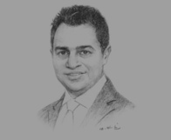OBG talks to Adnan Chilwan, Deputy CEO, Dubai Islamic Bank (DIB)

Interview: Adnan Chilwan
How has the banking industry strengthened its position since the onset of the financial crisis?
ADNAN CHILWAN: The financial downturn adversely affected the entire global financial industry. However, thanks to the decisive action taken by the UAE government in 2008, the country’s financial services sector is in a very strong position today. In recent years, the focus for banks and regulators alike has been to resolve underlying issues such as non-performing loans and the restructuring of debt. Working in unison, the Emirates Banks Association and the Central Bank of the UAE looked at ways to strengthen balance sheets. Post 2008 a new policy was implemented, which states that general provisions should reach a minimum of 1.5% of credit risk-weighted assets by 2014. Moreover, regulations were introduced to encourage banks to adopt a more balanced approach to lending.
Additionally, the central bank has mandated that starting in January 2013 all banks in the country must hold high-quality liquid assets equal to 10% of their liabilities. Capital adequacy ratios in the UAE banking sector are already well above BASEL II minimum requirements, and have increased from just over 13% in 2008 to 21% in 2011. These ratios were strengthened through a direct government equity injection of $16bn, greater retention of net income and cautious lending activity in 2010/11. The industry has also enjoyed a record fall in credit default swap rates for Dubai, from well over 9% at the start of the crisis to just over 2% today. These figures are significant and clear proof of a healthy banking industry in the UAE.
What impact has the overcrowded marketplace of Islamic banks had on deposit flows?
CHILWAN: The value of the global Islamic finance industry is set to double in size by 2015, reaching approximately $2trn, with growth primarily driven by demand in the GCC countries and Asia. Sukuk, or Islamic bonds, issuance is projected to grow 25% annually over the next three years to reach about $200bn a year, with Malaysia, Indonesia and the GCC expected to account for around 85-90% of this. In anticipation of this growth, the Islamic banking sector has attracted many new entrants, while numerous conventional players are also opening windows to cater to the growing segment. Today, there are nine Islamic banks in the UAE market, and approximately 54 institutions in total, although we have seen some consolidation recently. In such a competitive environment, product innovation and service quality are absolutely essential.
During the crisis period of 2008-10, many customers resorted to placing their funds in time deposits ( investment deposits in Islamic banks), which became highly attractive due to the security and stability of returns. The competition for this product has been among banks in the UAE rather than across borders, i.e. deposits have been travelling internally, rather than leaving the country. The larger players have enjoyed healthy deposit growth due to the inherent stability they offer, while smaller institutions have had to raise time/investment deposits to meet regulatory requirements. In the Middle East, Islamic banks continue to grow their deposit base at a faster pace of 15% compared to the conventional bank’s growth rate of 5%.
To what extent are Islamic banks well-suited to meet the needs of the small business market?
CHILWAN: The small and medium-sized enterprise (SME) sector is one of the most vibrant constituents of the UAE’s economy today, accounting for an estimated 85% of all businesses and contributing nearly 60% to the nation’s GDP. At DIB we are meeting an increasing number of high-calibre entrepreneurs with big ambitions. To realise their goals, SMEs require a variety of products and services, such as working capital, asset financing and trade financing. Due to the increasing importance of the SME segment, many Islamic banks have already reshaped their business models to support and cater to the specific needs and requirements of the SME customer base.
You have reached the limit of premium articles you can view for free.
Choose from the options below to purchase print or digital editions of our Reports. You can also purchase a website subscription giving you unlimited access to all of our Reports online for 12 months.
If you have already purchased this Report or have a website subscription, please login to continue.

